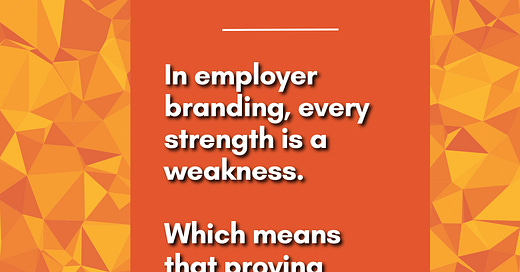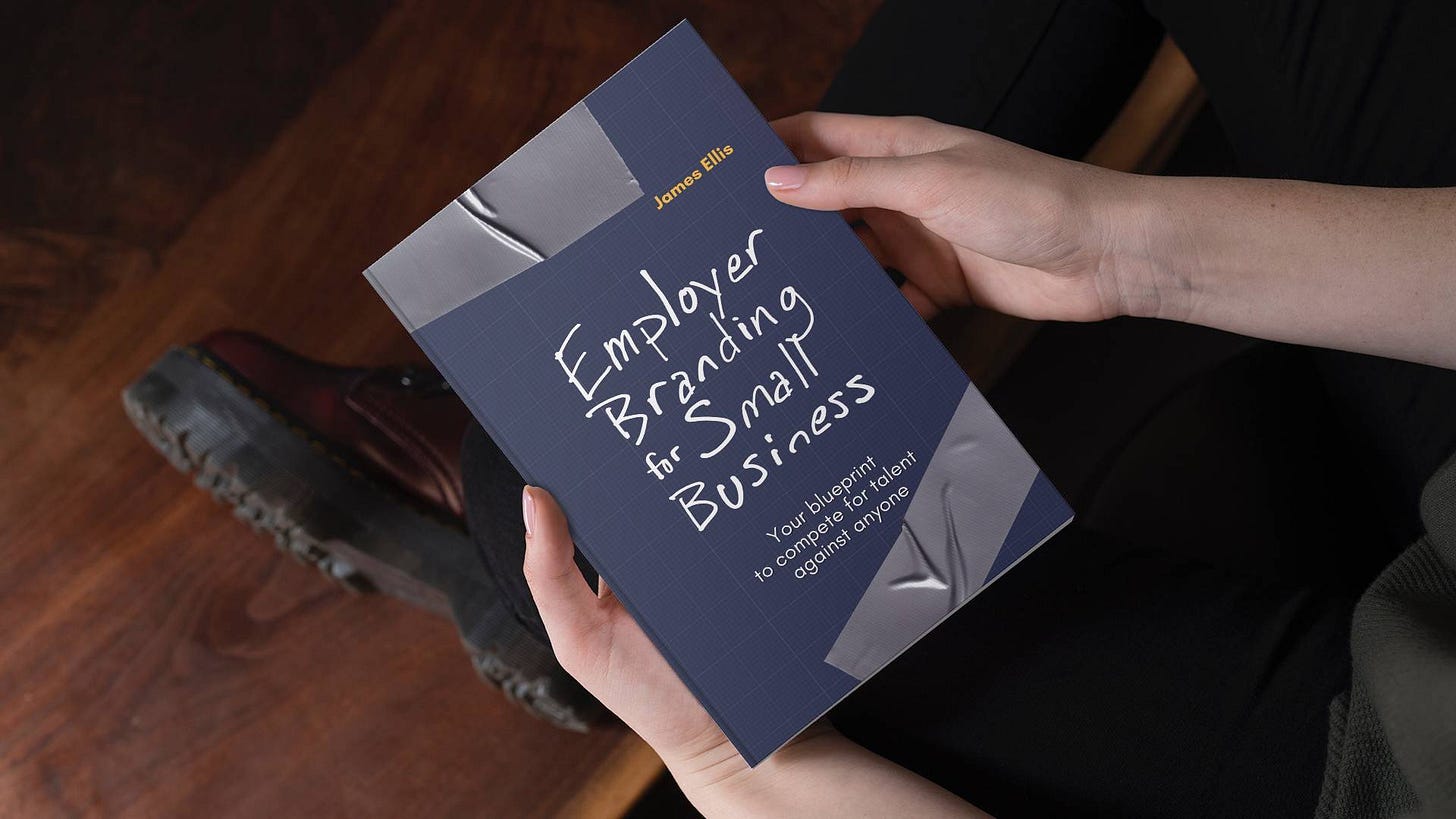If I had a dime for every article I saw in the past few on LinkedIn talking about “authenticity” I could retire and just write and podcast for the rest of my life.
…sigh…the dream…
Anyway!
People generally refer to it in moral terms, that being authentic is inherently “good.” That taking a “warts and all” approach is its own reward.
Now, if the choice is, “do we cherry-pick positive elements and cheerlead them or should we be authentic?” the choice is clear. Being authentic (I swear I am already sick of typing the word) should be the better strategy.
If the choice is, “should we paint a picture of a future that may never come to pass, or should be we authentic?” again, you should focus on telling people about the reality of now.
If the choice is “should we talk about the self-serving ideas we want people to believe about the experience of working here, or should we be authentic?” there again, this a simple decision.
But those are clearly straw men (straw persons?) arguments. Obviously, aspiration of a future that isn’t real, or being a cheerleader (or my favorite, taking a George Costanza “if you believe it, it isn’t a lie” approach) is a great way to attract attention to an idea that’s paper thin.
Because the real value of authenticity is that it has depth. That you can scratch the surface and not only see more authenticity but that the reality serves as context for what you’re seeing.
Let’s take my favorite punching bag, Goldman Sachs (I feel very confident that the folks at GS are in no way concerned about the way I talk about them). This is a company famous (or infamous?) for having zero chill. Insanely long hours, stress for breakfast and antacids for lunch, and the fear that while competing side-by-side with some of the smartest and savviest people in finance, you might not make the cut.
It would be easy to slap an aspirational brand on them. Something like, “we’re changing finance to help people around the world have access to capital.” It seems almost altruistic! But what happens when a new hire walks straight into the reality of 100-hour work weeks? That difference between selling point and reality isn’t a gap as much as it is a chasm, one littered with the resignation letters of people who felt like they were given a bait-and-switch situation.
What about a cheerleader brand? Cherry-picking “true” things from a larger picture might look like, “This is a place where you’ll make a lot of money and your friends will all be very impressed by the watch and bag you wear.” All true, but by no means a complete truth. It still ignores the dark side of success: the sacrifices in time, sweat, and soul it takes to earn that watch or bag (and knowing you likely won’t have too many friends left when you do).
But what if we lean into what’s real about this job? Sure, talking on compensation is “real,” but it is an incomplete truth and presents an overly-rosy picture of what it’s like to work there. I mean, if someone pitched you an amazing job at a well-known firm offering you a pile of cash, it sounds good, but you’re looking for the catch, aren’t you?
Rather than ignore the insane hours and instead focus on compensation, why not use the “negatives” to prove the positive? Why not say that long hours are the price you pay for such great compensation? Suddenly, the positives seem more credible.
Every strength is a weakness. Which means that proving a strength means admitting the weakness.
Authenticity is great, but mostly because it paints a more complete picture of the workplace instead of just the pleasant things.
Authenticity is great because it allows candidates to make an informed choice about their own futures instead of being sold a story.
+++++
A day late, but it’s finally really here! Employer Branding for Small Business, is now available on Amazon!
***This Newsletter Contains No ChatGPT***
###






